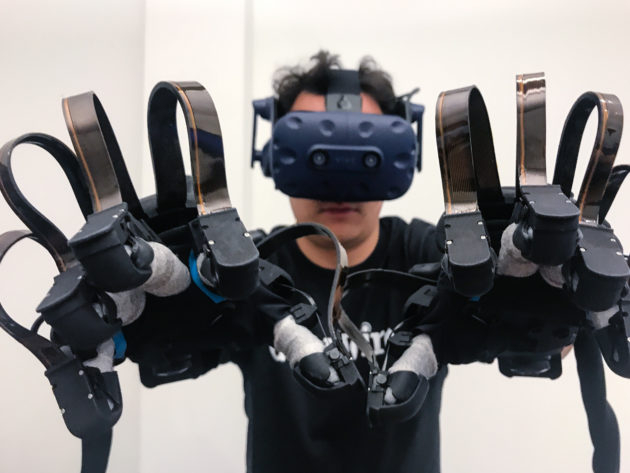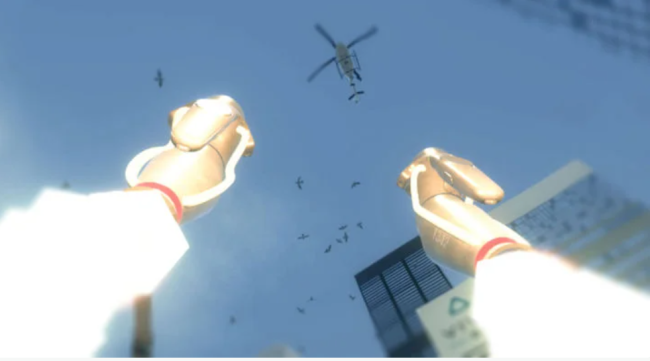
With virtual reality’s ever-advancing market, an uncertain future lies ahead of us. Immersive virtual technology continues to make gigantic strides in almost every industry imaginable and leaves the public with a very disconcerting question: will virtual reality (VR) be able to usurp our own reality in the near future? This specific question has been on the minds of many, including myself, as we continue to innovate our technology. However, VR, at its current state, is far from replicating the depth and complexity of real-life reality and may never even come close. With that being said, reality and the public have nothing to fear about a simulated reality, as VR needs exponential amounts of research and innovation to even approach an accurate simulation of real life.
When one places a VR headset of any kind on their head, they become visually and auditorily immersed in a virtual environment. Now this is quite cool already, but there is no feeling of you actually being in that environment, there is no smell of this environment, and there is certainly no taste.
Slater and Sanchez-Vivez make an incredible point about this disconnection of the two realities; they state that “there must always be some aspect of the VR that does not conform with reality” for a separation of real life and virtual reality. In other words, as long as there is some sense missing, total immersion is theoretically impossible in a virtual environment. The task of making realities seamless is daunting and realistically impossible with the tech of today and the tech in the distant future. Although technology such as haptics, devices that imitate touch and motion, does exist currently, they are nowhere near what they must be for a seamless reality to exist.
For example, if you stepped into a virtual field of grass and tried to bend down to touch the blades in a haptic system, with the current technology you would not feel resistance or texture, but rather vibrations and feedback from the controller. To put this to the extreme, if you walked off a ledge in VR, you would need to feel the fall in real life to connect fully into a new reality, which is impossible with VR’s current technology.
This idea of “feeling the fall” is a topic often explored in VR. Take the program Richie’s Plank Experience, for example. Richie’s Plank Experience stands out because its main focus as a game is to try and replicate that fear and sense of environment in a way that most VR games fall short in.
What everyone talks about with Richie’s Plank Experience is the actual plank segment where you walk the plank at the top of a skyscraper. However, what I find to be beneficial to this argument in particular is my experience with the firefighting mode, which is a floor down from the plank in the virtual skyscraper. In this mode you can fly around the city like a superhero, putting out fires and really experiencing the heights and falls. Wind is simulated through loud gusts through the headphones; you visually see yourself in the sky; you visually and mechanically fight the fires, but you don’t feel the heat or wind. There is nothing signifying that your experience is “real.”

The disconnect between your body and your eyes and ears is a serious immersion breaker; it firmly grounds you in reality. You can fall from the sky to the pavement below and act as if nothing happened. There is no consequence for making a mistake, and there is no fear of the fires spreading. This disconnection and distortion of a person’s morals and senses is the largest reason for why VR may never exceed the immersion we feel in daily life. The bottom line is that VR can only simulate an arbitrary physical reality in its current state and can only attempt to copy and not improve upon the immersion of life itself.
Richie’s Plank Experience brings up another flaw in the VR industry: the headsets themselves and the idea of “going into VR.” The fact that a person already has to “go into” VR suggests that VR itself is fake and separate from what we already know as normal. We treat VR as an experience, rather than a reality like the name suggests. In order to perceive VR as a reality, “the participant would have to not remember that they had gone into a VR system” in the first place, as pointed out by Slater and Sanchez-Vivez. The idea of having to use a headset breaks immersion by default, and seamless immersion is the overall goal of simulating reality.
To create an effect of seamless immersion, the industry must steer away from the idea of VR gear and interfaces in order to create a real-life experience in virtual reality or at least make the user unknowing about the headset. Phasing out heavy headsets that hang on the head has to be the first step to creating a truly immersive experience.
Immersive experiences can only go so far at the current level of innovation. In the grand scheme of things, I believe we have nothing to fear about immersive technology in its current state or in the distant future. Although one may argue that VR could advance with enough time, energy, and money, this investment is far too great to be completed within our lifetimes or the lifetimes to come. Despite how far VR has come in recent years, with how much headsets and interfaces have evolved, its technology is unlikely to ever reach the complexity and elegance of reality.
Image Sources:
Headline Image
Image 1

